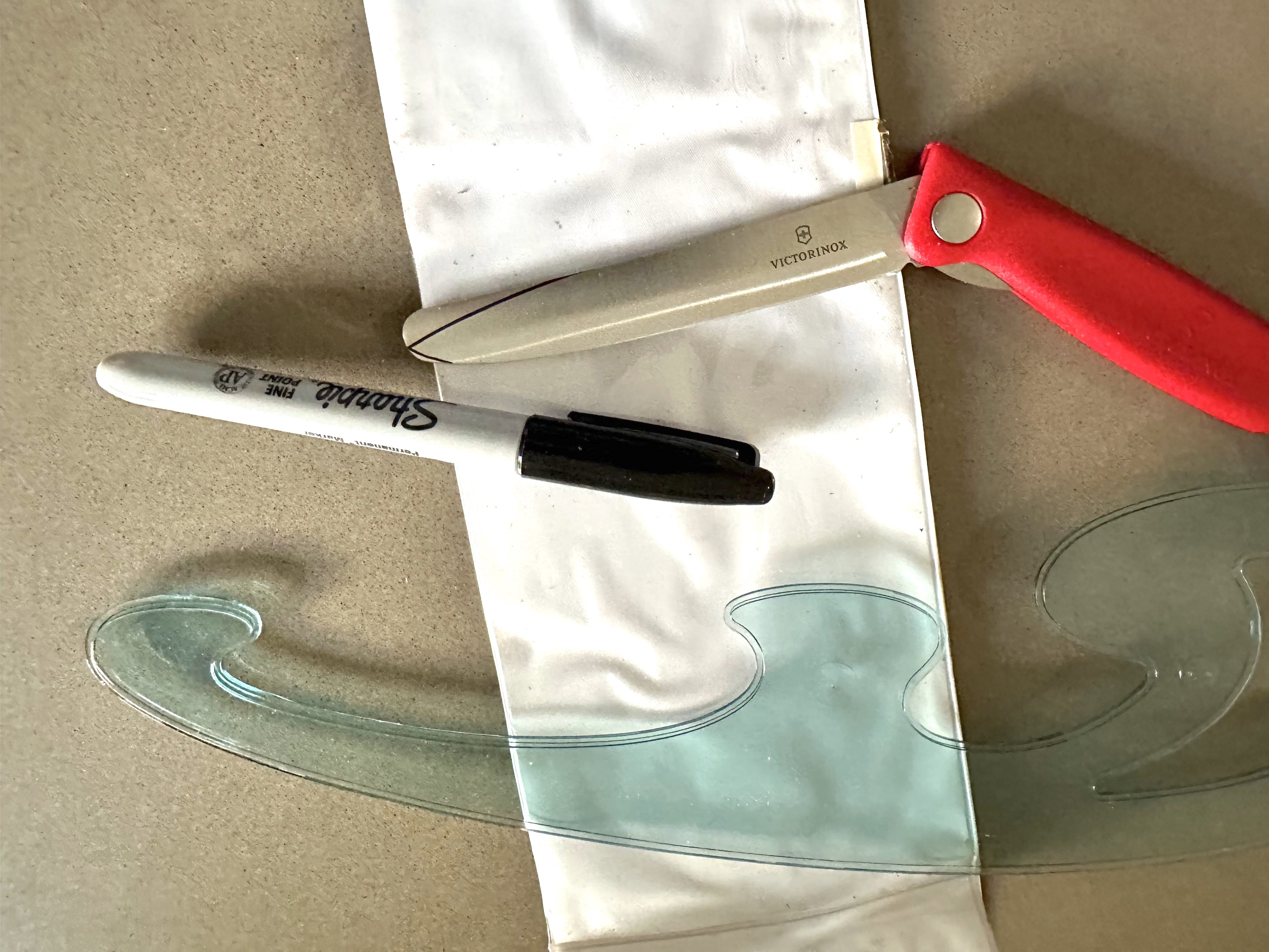Debian on ARM via QEMU
NOTE this post has been superseded by https://phwl.org/2022/qemu-aarch64-debian/.
This post describes how to emulate an ARM 64 bit (aarch64) or ARM hard float 32 bit (armhf) processor using using qemu and install Debian Linux on the emulator. Actually I did the 32 bit one first so the process is a little more streamlined for 64 bit.
I used Ubuntu 18.04.5 but any Debian/Ubuntu distribution can be used with minor changes and it should work under VirtualBox.
1. Create QEMU Image
1.1. For (64-bit) aarch64
I used the lastest version of qemu from github and created a 32G qcow2 image (there isn’t any disk space advantage to specifying 16G but it is a pain if it runs out).
$ qemu-system-aarch64 --version
QEMU emulator version 5.2.92 (v6.0.0-rc2)
Copyright (c) 2003-2021 Fabrice Bellard and the QEMU Project developers
$ qemu-img create -f qcow2 debian-3607-aarch64.qcow2 32G
$ wget https://cdimage.debian.org/mirror/cdimage/archive/10.9.0/arm64/iso-cd/debian-10.9.0-arm64-xfce-CD-1.iso
$ wget http://ftp.au.debian.org/debian/dists/buster/main/installer-arm64/20190702/images/cdrom/initrd.gz
$ wget http://ftp.au.debian.org/debian/dists/buster/main/installer-arm64/20190702/images/cdrom/vmlinuz
$ qemu-system-aarch64 -M virt -cpu cortex-a53 -m 1G -initrd initrd.gz -kernel vmlinuz -append "root=/dev/sda2 console=ttyAMA0" -global virtio-blk-device.scsi=off -device virtio-scsi-device,id=scsi -drive file=debian-3607-aarch64.qcow2,id=rootimg,cache=unsafe,if=none -device scsi-hd,drive=rootimg -net user,hostfwd=tcp::10022-:22 -net nic -nographic -device intel-hda -device hda-duplex
- No common CD-ROM drive was detected: Manually select to use /dev/vdb
$ sudo apt install libguestfs-tools
$ virt-copy-out -a debian-3607-aarch64.qcow2 /boot/vmlinuz-4.19.0-16-arm64 /boot/initrd.img-4.19.0-16-arm64 .
$ qemu-system-aarch64 -M virt -cpu cortex-a53 -m 1G -initrd initrd.img-4.19.0-16-arm64 \
-kernel vmlinuz-4.19.0-16-arm64 -append "root=/dev/vda2 console=ttyAMA0" \
-drive if=virtio,file=debian-3607-aarch64.qcow2,format=qcow2,id=hd \
-net user,hostfwd=tcp::10022-:22 -net nic -nographic -device intel-hda -device hda-duplex
$ qemu-system-aarch64 -M virt -cpu cortex-a53 -m 1G -initrd initrd.img \
-kernel vmlinuz -append "root=/dev/vda2 console=ttyAMA0" \
-drive if=virtio,file=debian-3607-aarch64.qcow2,format=qcow2,id=hd \
-drive file=debian-11.2.0-arm64-DVD-1.iso,id=cdrom,if=none,media=cdrom -device virtio-scsi-device -device scsi-cd,drive=cdrom \
-net user,hostfwd=tcp::10022-:22 -net nic -nographic -device intel-hda -device hda-duplex
Then you can login as root and
# apt update
# apt
1.2. For (32-bit) armhf
Install qemu.
$ sudo apt update
$ sudo apt upgrade
$ mkdir qemu; cd qemu
$ sudo apt install qemu-system-arm
Download initrd.gz, vmlinuz and debian-10.9.0-armhf-netinst.iso (alternatively debian-10.9.0-armhf-xfce-CD-1.iso).
$ wget http://ftp.debian.org/debian/dists/buster/main/installer-armhf/20190702/images/netboot/initrd.gz
$ wget http://ftp.debian.org/debian/dists/buster/main/installer-armhf/20190702/images/netboot/vmlinuz
$ wget http://debian.mirror.digitalpacific.com.au/debian-cd/10.9.0/armhf/iso-cd/debian-10.9.0-armhf-netinst.iso
$ qemu-img create -f qcow2 debian-3607.qcow2 16G # 8G will also work but not leave enough disk space for other things
$ qemu-system-arm -M virt -kernel ./vmlinuz -initrd ./initrd.gz -hda debian-3607.qcow2 -nographic -m 1024M -append "console=ttyAMA0" -drive file=debian-10.9.0-armhf-netinst.iso,id=cdrom,if=none,media=cdrom -device virtio-scsi-device -device scsi-cd,drive=cdrom
Use all of the defaults for the Debian installer.
- I used “elec3607” for all user names and passwords.
- For partitioning select “Guided - use entire disk”. Note that this chooses /dev/vda2 for / (we will use this later).
- If you get a “Failed to install the base system” message, try a second time from the menu.
- Select linux-image-armmp-lpae for the kernel.
- Select targeted for initrd (This was a mistake, choose generic)
- For software to install, just choose “SSH server” and “standard system utilities” (the default).
- You will receive the message that GRUB installation failed. We will fix this later.
- Exit
qemuwith “control-A x”.
Extract the kernel and initrd from the disk image.
$ sudo apt-get install libguestfs-tools
$ virt-ls -a debian-3607.qcow2 /boot/
$ virt-copy-out -a debian-3607.qcow2 /boot/vmlinuz-4.19.0-16-armmp-lpae /boot/initrd.img-4.19.0-16-armmp-lpae .
Now you can run your Debian-Arm Linux from either Linux:
$ qemu-system-arm -M virt -kernel vmlinuz-4.19.0-16-armmp-lpae -initrd initrd.img-4.19.0-16-armmp-lpae \
-append 'root=/dev/vda2' -drive if=virtio,file=debian-3607-lab4sol.qcow2,format=qcow2,id=hd \
-nographic -net user,hostfwd=tcp::10022-:22 -net nic
2. Install sudo and put ELEC3607 in the sudo group
Login as elec3607 (password is elec3607) and execute the following commands.
Note that the basic distribution of Debian does not include sudo.
$ su -
Password:
# apt install sudo
Reading package lists... Done
...
usermod -a -G sudo elec3607
shutdown now
You can also ssh to the machine and use X windows.
$ ssh -Y elec3607@localhost -p 10022
The complete list of Debian packages is available here.
3. Install Debian Audio
Start by booting QEMU.
$ qemu-system-aarch64 -M virt -cpu cortex-a53 -m 1G -initrd initrd.img-4.19.0-16-arm64 \
-kernel vmlinuz-4.19.0-16-arm64 -append "root=/dev/vda2 console=ttyAMA0" \
-drive if=virtio,file=debian-3607-aarch64.qcow2,format=qcow2,id=hd \
-net user,hostfwd=tcp::10022-:22 -net nic -nographic -device intel-hda -device hda-duplex&
Rather than login directly, I prefer to ssh to the QEMU machine so I can run Xwindows.
$ ssh -Y elec3607@localhost -p 10022
You can also copy files to it.
scp -P 10022 -r lab5-audio elec3607@localhost:
Install the alsa and pulseaudio.
$ sudo apt install libasound2 libasound2-plugins libasound2-doc alsa-utils pulseaudio pavucontrol paprefs libpulse-dev libcanberra-gtk-dev
$ sudo usermod -aG audio,pulse,pulse-access elec3607
Then you have to log out and log in again.
$ aplay -l
**** List of PLAYBACK Hardware Devices ****
card 0: Intel [HDA Intel], device 0: Generic Analog [Generic Analog]
Subdevices: 1/1
Subdevice #0: subdevice #0
$ pulseaudio --start
$ pactl info
Server String: /run/user/1000/pulse/native
Library Protocol Version: 32
Server Protocol Version: 32
Is Local: yes
Client Index: 2
Tile Size: 65472
User Name: elec3607
Host Name: debian
Server Name: pulseaudio
Server Version: 12.2
Default Sample Specification: s16le 2ch 44100Hz
Default Channel Map: front-left,front-right
Default Sink: alsa_output.platform-4010000000.pcie-pci-0000_00_02.0.analog-stereo
Default Source: alsa_input.platform-4010000000.pcie-pci-0000_00_02.0.analog-stereo
Cookie: 1295:3f1d
Then you can start it up via systemctl.
$ systemctl --user enable pulseaudio
$ systemctl --user start pulseaudio
Job for pulseaudio.service failed because the control process exited with error code.
See "systemctl --user status pulseaudio.service" and "journalctl --user -xe" for details.
$ sudo shutdown -r now
Wait for everything to come back up and login again via ssh
$ systemctl --user status pulseaudio
● pulseaudio.service - Sound Service
Loaded: loaded (/usr/lib/systemd/user/pulseaudio.service; enabled; vendor pre
Active: active (running) since Sat 2021-04-10 15:59:48 AEST; 4s ago
Main PID: 336 (pulseaudio)
CGroup: /user.slice/user-1000.slice/[email protected]/pulseaudio.service
├─336 /usr/bin/pulseaudio --daemonize=no
└─357 /usr/lib/aarch64-linux-gnu/pulse/gsettings-helper
Now edit /etc/pulse/default.pa and append the line:
load-module module-null-sink sink_name=MySink format=s16le channels=1 rate=12000
We can restart the daemon and configure with.
$ systemctl --user restart pulseaudio
$ pacmd list-sinks
2 sink(s) available.
* index: 0
name: <alsa_output.platform-4010000000.pcie-pci-0000_00_02.0.analog-stereo>
driver: <module-alsa-card.c>
flags: HARDWARE HW_MUTE_CTRL HW_VOLUME_CTRL DECIBEL_VOLUME LATENCY FLAT_VOLUME DYNAMIC_LATENCY
state: IDLE
suspend cause: (none)
priority: 9039
volume: front-left: 30419 / 46% / -20.00 dB, front-right: 30419 / 46% / -20.00 dB
balance 0.00
base volume: 65536 / 100% / 0.00 dB
volume steps: 65537
muted: no
current latency: 1283.09 ms
max request: 344 KiB
max rewind: 344 KiB
monitor source: 0
sample spec: s16le 2ch 44100Hz
channel map: front-left,front-right
Stereo
used by: 0
linked by: 0
configured latency: 2000.00 ms; range is 0.50 .. 2000.00 ms
card: 0 <alsa_card.platform-4010000000.pcie-pci-0000_00_02.0>
module: 6
properties:
alsa.resolution_bits = "16"
device.api = "alsa"
device.class = "sound"
alsa.class = "generic"
alsa.subclass = "generic-mix"
alsa.name = "Generic Analog"
alsa.id = "Generic Analog"
alsa.subdevice = "0"
alsa.subdevice_name = "subdevice #0"
alsa.device = "0"
alsa.card = "0"
alsa.card_name = "HDA Intel"
alsa.long_card_name = "HDA Intel at 0x10040000 irq 50"
alsa.driver_name = "snd_hda_intel"
device.bus_path = "platform-4010000000.pcie-pci-0000:00:02.0"
sysfs.path = "/devices/platform/4010000000.pcie/pci0000:00/0000:00:02.0/sound/card0"
device.bus = "pci"
device.vendor.id = "8086"
device.vendor.name = "Intel Corporation"
device.product.id = "2668"
device.product.name = "82801FB/FBM/FR/FW/FRW (ICH6 Family) High Definition Audio Controller (QEMU Virtual Machine)"
device.form_factor = "internal"
device.string = "front:0"
device.buffering.buffer_size = "352800"
device.buffering.fragment_size = "176400"
device.access_mode = "mmap+timer"
device.profile.name = "analog-stereo"
device.profile.description = "Analog Stereo"
device.description = "Built-in Audio Analog Stereo"
alsa.mixer_name = "QEMU Generic"
alsa.components = "HDA:1af40022,1af40022,00100101"
module-udev-detect.discovered = "1"
device.icon_name = "audio-card-pci"
ports:
analog-output-lineout: Line Out (priority 9900, latency offset 0 usec, available: unknown)
properties:
active port: <analog-output-lineout>
index: 1
name: <MySink>
driver: <module-null-sink.c>
flags: DECIBEL_VOLUME LATENCY FLAT_VOLUME DYNAMIC_LATENCY
state: IDLE
suspend cause: (none)
priority: 1000
volume: mono: 65536 / 100% / 0.00 dB
balance 0.00
base volume: 65536 / 100% / 0.00 dB
volume steps: 65537
muted: no
current latency: 1576.69 ms
max request: 46 KiB
max rewind: 46 KiB
monitor source: 2
sample spec: s16le 1ch 12000Hz
channel map: mono
Mono
used by: 0
linked by: 0
configured latency: 2000.00 ms; range is 0.50 .. 2000.00 ms
module: 20
properties:
device.description = "Null Output"
device.class = "abstract"
device.icon_name = "audio-card"
$ pacmd list-sources
3 source(s) available.
index: 0
name: <alsa_output.platform-4010000000.pcie-pci-0000_00_02.0.analog-stereo.monitor>
driver: <module-alsa-card.c>
flags: DECIBEL_VOLUME LATENCY DYNAMIC_LATENCY
state: SUSPENDED
suspend cause: IDLE
priority: 1030
volume: front-left: 65536 / 100% / 0.00 dB, front-right: 65536 / 100% / 0.00 dB
balance 0.00
base volume: 65536 / 100% / 0.00 dB
volume steps: 65537
muted: no
current latency: 0.00 ms
max rewind: 0 KiB
sample spec: s16le 2ch 44100Hz
channel map: front-left,front-right
Stereo
used by: 0
linked by: 0
configured latency: 0.00 ms; range is 0.50 .. 2000.00 ms
monitor_of: 0
card: 0 <alsa_card.platform-4010000000.pcie-pci-0000_00_02.0>
module: 6
properties:
device.description = "Monitor of Built-in Audio Analog Stereo"
device.class = "monitor"
alsa.card = "0"
alsa.card_name = "HDA Intel"
alsa.long_card_name = "HDA Intel at 0x10040000 irq 50"
alsa.driver_name = "snd_hda_intel"
device.bus_path = "platform-4010000000.pcie-pci-0000:00:02.0"
sysfs.path = "/devices/platform/4010000000.pcie/pci0000:00/0000:00:02.0/sound/card0"
device.bus = "pci"
device.vendor.id = "8086"
device.vendor.name = "Intel Corporation"
device.product.id = "2668"
device.product.name = "82801FB/FBM/FR/FW/FRW (ICH6 Family) High Definition Audio Controller (QEMU Virtual Machine)"
device.form_factor = "internal"
device.string = "0"
module-udev-detect.discovered = "1"
device.icon_name = "audio-card-pci"
* index: 1
name: <alsa_input.platform-4010000000.pcie-pci-0000_00_02.0.analog-stereo>
driver: <module-alsa-card.c>
flags: HARDWARE HW_MUTE_CTRL HW_VOLUME_CTRL DECIBEL_VOLUME LATENCY DYNAMIC_LATENCY
state: SUSPENDED
suspend cause: IDLE
priority: 9039
volume: front-left: 65536 / 100% / 0.00 dB, front-right: 65536 / 100% / 0.00 dB
balance 0.00
base volume: 65536 / 100% / 0.00 dB
volume steps: 65537
muted: no
current latency: 0.00 ms
max rewind: 0 KiB
sample spec: s16le 2ch 44100Hz
channel map: front-left,front-right
Stereo
used by: 0
linked by: 0
configured latency: 0.00 ms; range is 0.50 .. 2000.00 ms
card: 0 <alsa_card.platform-4010000000.pcie-pci-0000_00_02.0>
module: 6
properties:
alsa.resolution_bits = "16"
device.api = "alsa"
device.class = "sound"
alsa.class = "generic"
alsa.subclass = "generic-mix"
alsa.name = "Generic Analog"
alsa.id = "Generic Analog"
alsa.subdevice = "0"
alsa.subdevice_name = "subdevice #0"
alsa.device = "0"
alsa.card = "0"
alsa.card_name = "HDA Intel"
alsa.long_card_name = "HDA Intel at 0x10040000 irq 50"
alsa.driver_name = "snd_hda_intel"
device.bus_path = "platform-4010000000.pcie-pci-0000:00:02.0"
sysfs.path = "/devices/platform/4010000000.pcie/pci0000:00/0000:00:02.0/sound/card0"
device.bus = "pci"
device.vendor.id = "8086"
device.vendor.name = "Intel Corporation"
device.product.id = "2668"
device.product.name = "82801FB/FBM/FR/FW/FRW (ICH6 Family) High Definition Audio Controller (QEMU Virtual Machine)"
device.form_factor = "internal"
device.string = "front:0"
device.buffering.buffer_size = "352800"
device.buffering.fragment_size = "176400"
device.access_mode = "mmap+timer"
device.profile.name = "analog-stereo"
device.profile.description = "Analog Stereo"
device.description = "Built-in Audio Analog Stereo"
alsa.mixer_name = "QEMU Generic"
alsa.components = "HDA:1af40022,1af40022,00100101"
module-udev-detect.discovered = "1"
device.icon_name = "audio-card-pci"
ports:
analog-input-linein: Line In (priority 8100, latency offset 0 usec, available: unknown)
properties:
active port: <analog-input-linein>
index: 2
name: <MySink.monitor>
driver: <module-null-sink.c>
flags: DECIBEL_VOLUME LATENCY DYNAMIC_LATENCY
state: SUSPENDED
suspend cause: IDLE
priority: 1000
volume: mono: 65536 / 100% / 0.00 dB
balance 0.00
base volume: 65536 / 100% / 0.00 dB
volume steps: 65537
muted: no
current latency: 0.00 ms
max rewind: 46 KiB
sample spec: s16le 1ch 12000Hz
channel map: mono
Mono
used by: 0
linked by: 0
configured latency: 0.00 ms; range is 0.50 .. 2000.00 ms
monitor_of: 1
module: 20
properties:
device.description = "Monitor of Null Output"
device.class = "monitor"
device.icon_name = "audio-input-microphone"
The Volume Control program allows you to monitor what sources and sinks are available. If you play something and run pavucontrol.
$ paplay iq-16b.wav&
$ pavucontrol&
- In the Configuration tab, select Off as the Built-in Audio profile
- If you look at Input Devices and Show: All Input Devices, you should only see Monitor of Null Output and the meter should indicate something is playing.
- If you look at Output Devices and Show: All Output Devices, you should only see Null Output and the meter should indicate something is playing. `
If you play a file in the background, you can decode it.
$ paplay data/iq-16b.wav &
$ wsprcan/k9an-wsprd
Writing data/wf-1618037425.wav
mode -1 -3.1 0.001437 -3 VK2RG QF56 30
mode -19 -2.9 0.001455 -2 VK3GOD QF23 23
mode -21 -2.9 0.001478 -2 VK4YEH QG62 37
<DecodeFinished,data/wf-1618037425.wav,3>
[3]+ Done paplay data/iq-16b.wav
Other useful tools include:
- Firefox and audacity packages are useful but run too slow on QEMU.
sudo apt install firefox-esr audacity - PulseAudio Preferences can be used to configure the network.
$ paprefs- Under the Network Access tab, select “Make discoverable PulseAudio network sound devices available locally”
- Under the Network Server tab, select “Enable network access to local sound devices” and “Don’t require authentication”
If you go to a websdr in Firefox, you can route the audio to your machine.
$ firefox http://websdr1.sdrutah.org:8901/index1a.html?tune=7038.6usb &
Unfortunately, this doesn’t run fast enough under QEMU to work on wspr decoding but it does under native x86 Linux.



